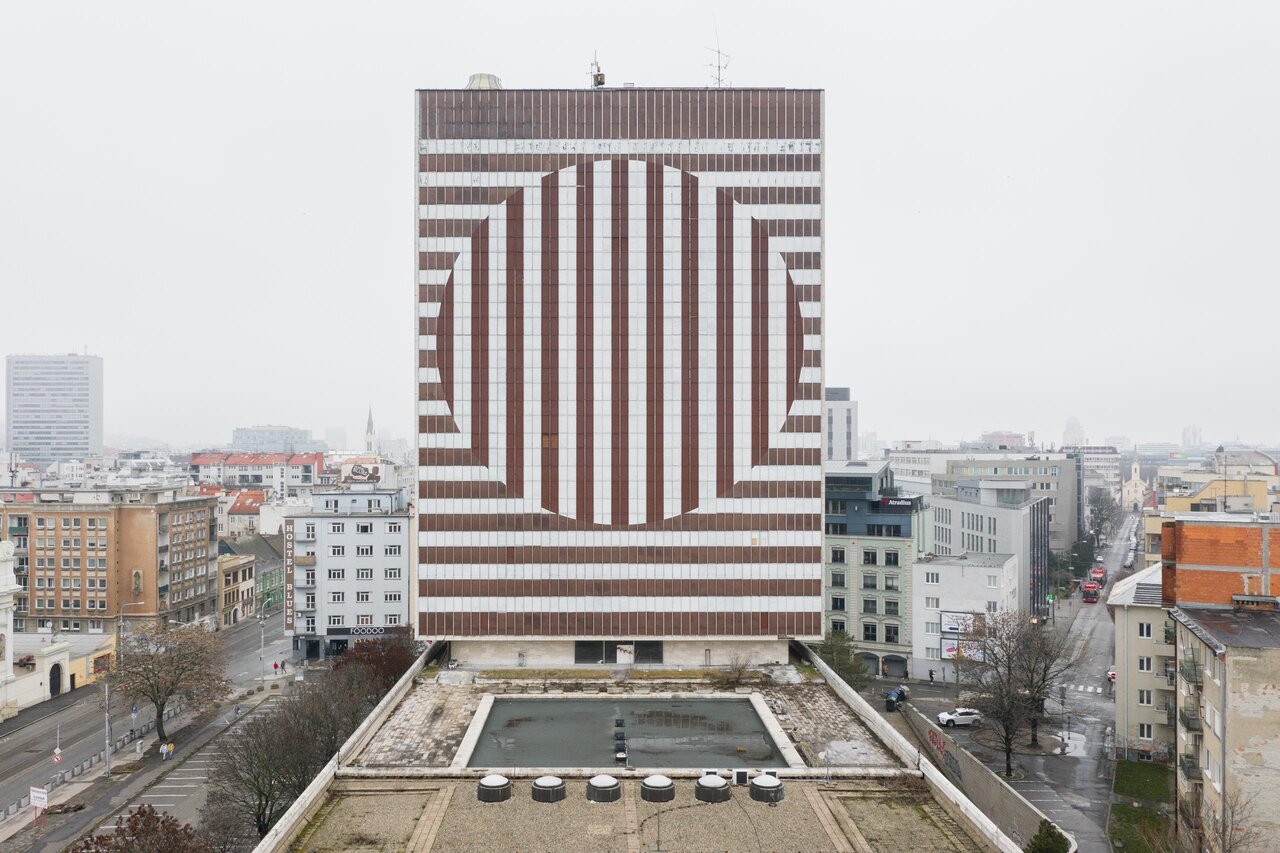In the early 1960s, plans were formed to expand and redesign Bratislava city centre along Špitálska Street (then Czechoslovak Army Street) and the lower section of SNP Square. The plan included demolishing older buildings on Kamenné Square and part of Rajská Street to create space for the construction of Hotel Kyjev and the new PRIOR shopping centre. Construction progressed eastward on Špitálska Street, and included a lavishly designed ministerial administrative building (today housing the Slovak Republic Ministry of Labour, Social Affairs, and Family). The concept for these building complexes was created by the renowned Slovak architect Ivan Matušík.
The comprehensive plan to extend Špitálska Street and create a city boulevard was never implemented, but Matušík's intentions are evident at the ministry building, in front of which he designed a generous public space with a centrepiece fountain. He created it in collaboration with the ceramicist E. Trachtová, setting the fountain in a square grid within the open atrium in front of the main entrance to the building. The fountain is formed of a square surrounding a circular fountain basin. At each corner of the square is a column that supports a large round concrete bowl from which water is sprayed. The slightly raised perimeter of the fountain is paved with travertine slabs, and descends in shallow steps that cascade into the basin. The strict geometric shapes of the fountain contrast with the colourful ceramic tiles on the floor of the basin, which are laid in concave-convex patterns. The tiles feature a carefully considered range of colours, and were impressive both in summer with water flowing and out of season when the fountain was drained. In recent years, the fountain has not been functional. Metal parts are missing from the drain at the middle of the basin, which has become clogged with debris. The coloured glaze on the tiles has become cracked and chipped in numerous places.
The fountain and its surroundings were originally intended to be an area of pleasant relaxation in front of the administrative building, a space primarily for pedestrians. It was separated from the street and a reserved parking area by stone pillars that matched the materials and design of the fountain. Over time, however, the pillars were removed and in recent years cars have been parking in the immediate vicinity of the fountain – even on its edge, as evidenced by broken pieces of travertine paving. According to unofficial information, car owners complained that water from the fountain was splashing onto their cars, making them dirty, and so eventually the fountain was turned off. Architect Matušík responded to these absurd complaints during his lifetime, pointing out that the original design had never included parking near the fountain. At the same time, he proposed a compromise – an economical mode whereby water would not spray upwards through the nozzles, but would flow freely from the concrete bowls down the cascading steps into the basin. In this solution, water droplets would not be blown outside the fountain. The proposal was not implemented, and the ministry, as owner/administrator of the fountain, decided to close it instead of carrying out the required repairs and maintaining it.
ZD
Research status as of 6 May 2025.



